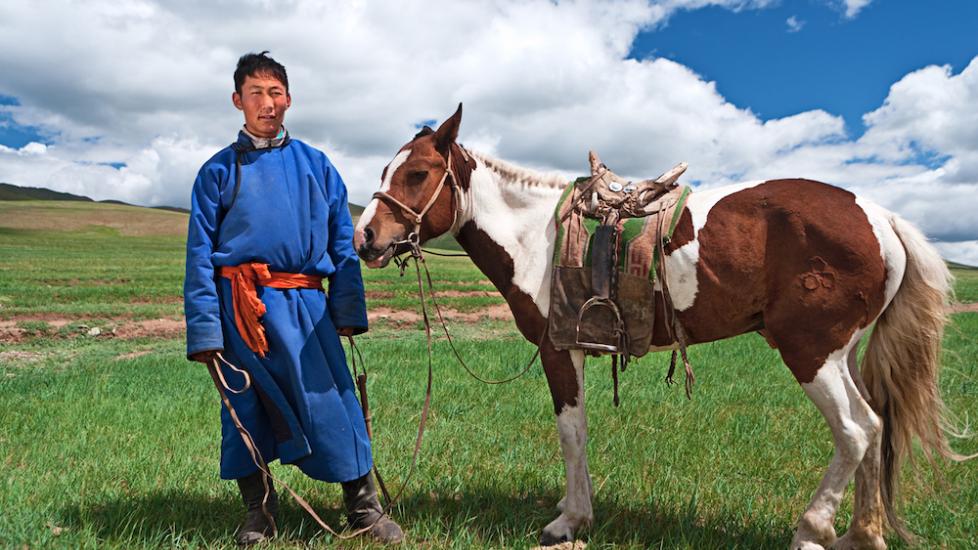Chinese Mongolian
Most often used for riding and farm work, the Chinese Mongolian horse breed is generally found in Northern China and Mongolia. This breed is also used for meat production or milk, as they can produce over 600 pounds a year.
Physical Characteristics
The small but stable Chinese Mongolian can be seen in a variety of colors, including bay, black, and gray. The head and neck are straight, and eyes are expressive. This breed’s chest, meanwhile, is profound and its shoulders sloped. Measuring in at only 12 to 14 hands high (48–56 inches, 122–142 centimeters), the Chinese Mongolian has well-rounded, sturdy legs. Generally, horseshoes are not needed for this breed, as its hooves are especially hard.
Personality and Temperament
Because of its Mongolian origin, these horses live with a wild reputation. However, they can easily be domesticated and trained to follow commands. Characterized by their valor, strength, and determination, Chinese Mongolian horses are excellent for long distance riding, carrying heavy loads, and doing strenuous farm work. In fact, when these horses are harnessed or hitched together, they can pull up to 4,000 pounds a distance of 30 to 50 miles a day.
Another attribute to this breed is its ability to survive in a difficult environment without requiring supplemental feeding.
History and Background
The Chinese Mongolian horse is thought to have existed for over 5,000 years. Developing in the regions of Northern China and Mongolia, the breed was not domesticated until about 2,000 B.C. and were used by the Mongol Empire warriors, especially in village raids. Thus, the breed was distributed to different provinces all over China.
The Chinese Mongolian may not be the most expensive or elegant breed in the world, but it surely has made its mark on history, developing into a strong, determined horse. Today, the Chinese Mongolian comes in three main types: the Wuzhumuquin, the Baicha, and the Wushen. Most modern Mongolian herds are semi-feral, facing little human interaction or influence. They face a wide range of temperature conditions and availability of food but are a hardy group that thrive in these extremes.
Health and Care
Because the Mongolian horse is so self-sufficient, it is important that the individuals kept as pets or work horses not be overfed. Small, easy keeping breeds are often more predisposed to metabolic or laminitic issues. Otherwise, they have relatively few feet problems overall due to their strong hooves, but regular veterinary care should be maintained for those domesticated and being used for farm work.
Featured Image: iStock.com/hadynyah
